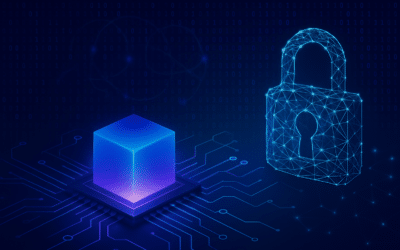Quantum...
Latest Ransomware Threats and Attack Vectors
Ransomware Defense and Recovery
In today’s digital landscape, ransomware has emerged as one of the most formidable threats to organizations and individuals alike. This malicious software encrypts files, rendering them inaccessible until a ransom is paid. The impact of ransomware can be devastating, leading to significant financial losses, operational downtime, and reputational damage. However, with the right strategies, it is possible to defend against ransomware and recover from attacks effectively. This blog will explore comprehensive ransomware defense and recovery strategies, including how ransomware can be delivered, the role of cryptoworms, and the importance of ransomware.
Understanding Ransomware Delivery
Ransomware can be delivered through various vectors, making it crucial to understand these methods to implement effective defenses. Here are some common delivery mechanisms:
1. Phishing Emails: One of the most prevalent methods, phishing emails trick recipients into clicking malicious links or downloading infected attachments. These emails often appear legitimate, mimicking trusted entities.
2. Malicious Websites: Visiting compromised or malicious websites can result in drive-by downloads, where ransomware is automatically downloaded and executed on the victim’s device.
3. Remote Desktop Protocol (RDP) Attacks: Attackers exploit weak RDP credentials to gain unauthorized access to systems and deploy ransomware.
4. Software Vulnerabilities: Unpatched software vulnerabilities can be exploited to deliver ransomware payloads. Regular updates and patch management are critical to closing these security gaps.
5. Malvertising: Malicious advertisements on legitimate websites can redirect users to malicious sites or directly download ransomware.
Ransomware Defense Strategies
1. Prevention and Preparedness
Risk Assessment: Conduct regular audits of your systems and network to identify vulnerabilities. This proactive approach helps in fortifying defenses before an attack occurs.
Secure Configuration: Strengthen your IT infrastructure and endpoints by implementing secure configurations. This includes disabling unnecessary services and ports, and ensuring that default passwords are changed.
Employee Training: Educate employees about ransomware risks, phishing, and safe online practices. Regular training sessions can significantly reduce the likelihood of human error leading to an infection.
Update and Patch Management: Regularly update all software and systems to prevent exploitation of known vulnerabilities. Implement a robust patch management process to ensure timely updates.
2. Defense Implementation
Firewall and Antivirus Deployment: Configure and manage effective firewall and antivirus systems to intercept threats. Firewalls control network traffic, while antivirus software detects and neutralizes malware.
Endpoint Protection: Utilize Endpoint Detection and Response (EDR) solutions for continuous monitoring and threat response. EDR tools can detect and respond to suspicious activities in real-time.
Email Security Protocols: Employ advanced email filters and authentication mechanisms to thwart phishing attempts. Email security solutions can block malicious attachments and links.
Access Control Measures: Implement stringent password policies and Multi-Factor Authentication (MFA) to secure access to systems. Limiting user privileges based on the principle of least privilege can also reduce the attack surface.
3. Backup and Recovery Planning
Immutable Backup Systems: Create immutable backups that cannot be altered or deleted by ransomware. This ensures that you have a clean copy of your data available for recovery.
Regular Backup Schedule: Maintain a frequent data backup regime, including remote and isolated storage. Regular backups ensure that you can restore data to a recent state in case of an attack.
Backup Testing and Validation: Periodically verify the integrity of your backups and test restoration capabilities. This ensures that your backups are reliable and can be used effectively during recovery.
4. Incident Response and Recovery
Incident Response Plan: Develop a detailed incident response plan outlining the steps to take during a ransomware attack. This plan should include roles and responsibilities, communication protocols, and recovery procedures.
Data Recovery Strategies: Prepare for data recovery using methods such as Windows System Restore and decryption tools. Having a clear recovery strategy can minimize downtime and data loss.
Post-Incident Analysis: Conduct a thorough investigation of the attack to understand how it occurred and to improve future defenses. Learning from incidents helps in strengthening your security posture.
5. Continuous Monitoring and Adaptation
Ongoing Surveillance: Continuously monitor network and system activities for anomalies. Early detection of suspicious behavior can prevent ransomware from spreading.
Adaptive Security Measures: Regularly refine your security strategies to counter new ransomware methods. Staying updated with the latest threat intelligence is crucial for adapting defenses.
Compliance and Regulatory Review: Ensure that your cybersecurity practices comply with relevant regulations and standards. Regular reviews help in maintaining a strong security framework.

Interested in becoming a student?
Look for your passion in our available programs
Recovery from Ransomware Attacks
Despite the best preventive measures, ransomware attacks can still occur. Having a robust recovery plan is essential to minimize the impact and restore normal operations.
Key Elements of an Effective Ransomware Recovery Plan
1. Find the Trigger File(s): Identify and remove any trigger files from all devices to prevent the ransomware from reactivating.
2. Determine Attack Style**: Understanding the specific type of ransomware (screen-locking or encryption-based) helps in determining the appropriate recovery steps.
3. Disconnect All Devices: Isolate infected devices from the network to prevent the ransomware from spreading further.
4. Understand the Ransomware: Seek guidance from malware experts to understand the ransomware and explore decryption options. Some ransomware can be decrypted using available tools.
5. Restore File Systems: Use clean backups to restore data. Ensure that backups are scanned for malware before restoration to avoid reinfection.
Best Practices for Ransomware Recovery
1. Test and Validate Backups: Regularly test backups to ensure they are not corrupted and can be restored successfully. Validation helps in identifying any issues before an actual recovery is needed.
2. Prepare a Ransomware Incident Response Plan: Have a detailed plan that outlines specific responsibilities and steps to take during a ransomware attack. This plan should be practiced regularly.
3. Simulate and Practice Ransomware Recovery: Conduct regular simulations of ransomware incidents to ensure that your team is prepared and knows what to do. Practice helps in refining the recovery process.
4. Train Staff on Ransomware Prevention Tactics: Continuous training on recognizing phishing attacks and other tactics used by cybercriminals is essential. Educated employees are less likely to fall victim to ransomware.
Conclusion
Ransomware defense and recovery require a comprehensive and proactive approach. By understanding how ransomware can be delivered, implementing robust defense strategies, and having a well-prepared recovery plan, organizations can significantly reduce their vulnerability to ransomware attacks. Regular updates, employee training, and continuous monitoring are key components of an effective ransomware defense strategy. In the event of an attack, a well-executed recovery plan can minimize downtime and data loss, ensuring business continuity. Stay vigilant, stay prepared, and stay secure.
Become a student at Atlantis University
Related Posts
Digital Transformation Certificate for Future Leaders 2025
Explore our...
Sports Media Career: 10 Powerful Reasons to Get Started Today
Discover 10...
Human Intelligence Augmented by Artificial Intelligence – The Only Viable Path for Humanity in 2025
Human...
What’s Driving the Powerful Bahamas Tourism Industry in 2025
Explore how...
10 Powerful Reasons Norwegian Cruise Line Careers Offer Exceptional
Norwegian...










